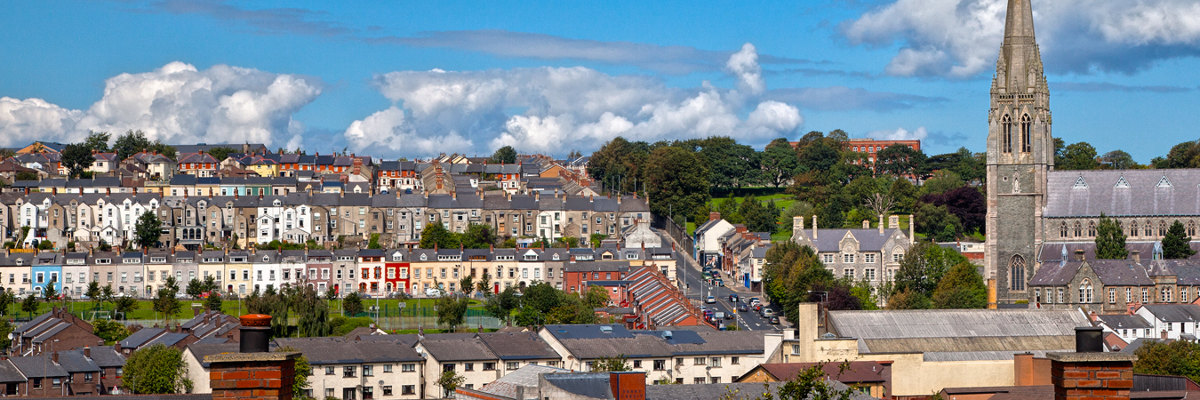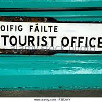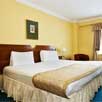Derry / Londonderry
Derry or Londonderry is the second city of Northern Ireland and the fourth largest city on the island of Ireland after Dublin, Belfast and Cork. The city has a photogenic location on the River Foyle in County Londonderry, close to County Donegal in the Republic of Ireland and its ancient defensive walls are the most complete in Ireland.
The city's name is a point of political dispute, with unionists advocating the longer name, and nationalists advocating the shorter. A common attempt at compromise is to refer to the county as "Londonderry" and the city as "Derry", but this is by no means universally accepted. Because of this, a peculiar situation arises as there is no common consensus either in politics or elsewhere as to which name is preferred; the city council is officially known as "Derry", but the city is officially recognised as "Londonderry" by the Northern Ireland Executive and the UK government. Whilst road signs in the Republic of Ireland use "Derry", alongside the Irish language translation "Doire", road signs in Northern Ireland will always read (unless vandalised) "Londonderry".

Image: Derry, Northern Ireland
Situated on the banks of the River Foyle, Derry is the second largest city in Northern Ireland and one of the oldest inhabited places in the whole island of Ireland. As they say there, 'Derry was a city when Belfast was still a swamp'. Derry's history dates back over 1,450 years, a lasting reminder of the early inhabitants of the area is the Iron Age fort, just over the border in County Donegal, known as the Grianan of Aileach.
Derry is the only remaining completely intact walled city in Ireland and one of the finest examples of a walled city in Europe. The walls constitute the largest monument in State care in Northern Ireland and, as the last walled city to be built in Europe, stands as the most complete and spectacular.
The legacy of the Great Siege of Derry lasted for centuries after the event with the Catholic and Protestant communities in Derry remaining bitterly divided, something that was further fuelled by Ireland's partition in 1922. The city's close proximity to the border with the Irish Free State (later the modern-day Republic of Ireland), coupled with the city's much closer Catholic / Protestant demographic meant that conflict and outbreaks of violence were arguably worse than within Belfast. During the years of the Troubles, Derry witnessed some of the most prominent and terrible events of those times. It was on Derry's Bogside area that British soldiers shot dead 14 civil rights protesters in what became known as Bloody Sunday. The majority of the Bogside murals commemorate this tragic loss of innocents.
Since the peace process in Northern Ireland, Derry is slowly emerging as an upbeat cosmopolitan city with great potential and huge tourist interest. In July 2010, Derry was awarded City of Culture for 2013. A lot of Derry’s sights are meshed with its history, the 16th Century walls which surround the city are among the oldest and the best preserved citadel walls in Europe.
A huge percentage of Derry’s population fall into the 20 – 30 age group and there are plenty of places to cater for them with lots of clothes shops and boutiques, pubs, bars and clubs and Derry's traditional Irish and folk music scene are well established.





